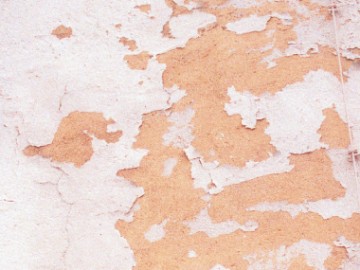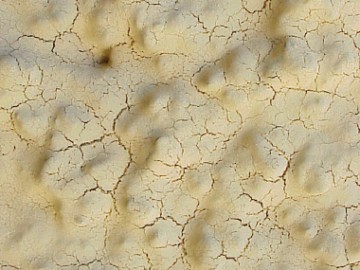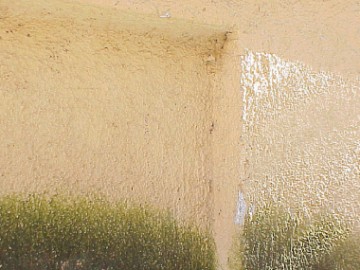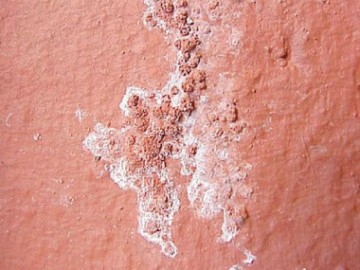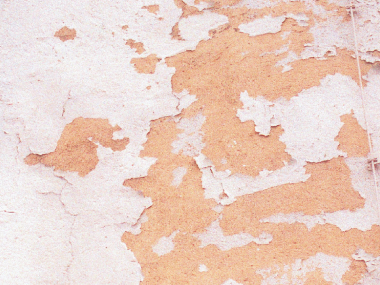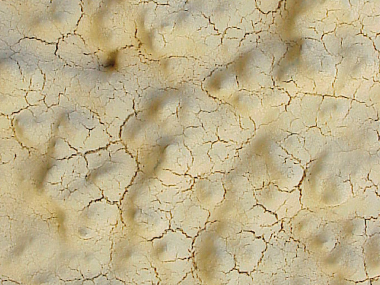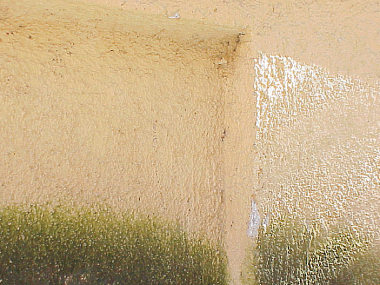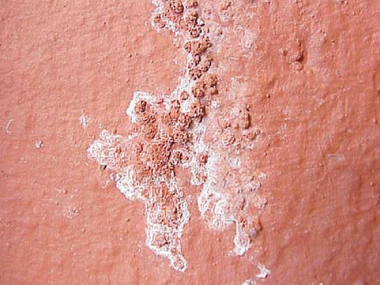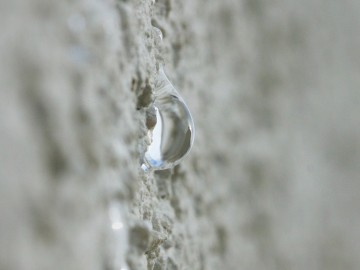Decorative Coatings: Bringing Walls to Life
Natural oils and fats, various kinds of waxes and silicone derivatives – what sounds like the list of ingredients for a facial mask is actually a potted history of decorative coatings, a tradition WACKER has honed to perfection.

There are more similarities than just the basic ingredients. Much like skin-care products, decorative coatings are designed to protect a building’s walls against the wear and tear of everyday life. One of the key challenges for exterior paints, for example, is to allow vapor to diffuse from the inside out while reducing the ingress of water. On the inside, interior paints make it easier to remove stains, thereby also protecting resources as renovation cycles can be extended.
To achieve this, WACKER has invested more than half a century of research and hundreds of millions of euros to deliver a state-of-the-art portfolio of decorative coatings. WACKER experts discovered the benefits of silicone resins for masonry protection some 50 years ago. As their research showed, silicone resins react with mineral construction materials to form a water-repellent, yet vapor-permeable network. Patented as “Aqueous dispersions of paints containing organopolysiloxanes and organic resins” on 16 October 1963, this expertise laid the foundation for the development of silicone resin emulsion paints.

WACKER has since established silicone resins as an industry standard for the hydrophobization of facades. Continuing its research with a multi-million euro budget each year, the company’s SILRES® BS portfolio offers some of the most advanced and effective binders, additives and primers to successfully repel water and dirt from any given surface. Inside a building, SILRES® BS additives enhance interior paints to make them more scratch resistant and easier to clean. Additives can also extend the open time of interior paints, giving workers more time to apply a second coat.
Protecting against Water
Time Bombs in the Fabric
Damp masonry tends to suffer, for example, if temperatures drop below zero. Water inside will freeze and increase its volume, enlarging existing cracks in the facade or creating new ones with almost explosive power. Some of the water’s ingredients reinforce this effect as, for example, drying salt crystallizes and requires more space.
A wet building is also more likely to attract unwelcome visitors. Microorganisms such as algae travel by wind and are deposited on facades. They proliferate particularly on weathered facades that do not dry out well, colonizing large areas, which then turn green, brown or red.
Another risk factor is paint that is inappropriately applied to the building’s surface. A film-forming exterior coating, for example, is less permeable to water vapor and therefore fosters blistering. The coating will adhere less well and will detach from the substrate at weak points.
The flip-side of insulation is often permeability. Water originating on the inside must be able to leave the building. Any insulating coating therefore must be highly permeable to vapor. This is particularly important as, thanks to better insulation, modern construction work achieves ever higher levels of energy efficiency, often sealing off the inside. There is another side effect of improved insulation. As warmth is kept inside the home, its outer hull inevitably cools down. This impairs the wall’s ability to dry.
Apart from an unpleasant appearance, water and other damage severely reduces a facade’s capacity to insulate. If water penetrates the pores of a construction material, its thermal conductivity is increased and the insulating properties are significantly diminished. A moisture content of only 5% reduces the insulating efficiency by 60%.
Silicone resins owe their hybrid character to a unique inorganic-organic molecular structure. Thanks to their similarity to natural silica, these resins have a chemical affinity to mineral construction materials, making them extraordinarily durable. When applied to a mineral base, they form a three-dimensional network that is strongly hydrophobic and thus minimizes the uptake of both water and dirt while ensuring a high degree of vapor permeability. Silicone resin emulsion paints and plasters based on WACKER’s SILRES® BS therefore provide exterior paints and plasters with reliable protection against moisture, thus significantly contributing to highly energy efficient and sustainable buildings.
Protecting homes against inclement climatic conditions became one of life’s central purposes as mankind moved from hunter-gatherer to settler. For the past 2,000 years, ingredients such as oils, waxes and, in the early days, lime plasters played an important role in protecting a house against the wear and tear caused by heat and cold, sun and rain. In more recent years, silicone derivatives such as fats, resins or rubbers have become the main hydrophobic agents. WACKER may well have honed them to perfection with its SILRES® BS series of decorative coatings.
Among the many challenges to a building’s outer shell, water is the most serious, be it in a liquid, gaseous or frozen state. With a porous surface and countless capillaries with diameters from 0.1 to 100 micrometers, mineral-based construction materials tend to absorb rain or damp, stemming from either the inside or outside of a building. The capillaries – much finer than a human hair – transport water into the interior of a façade. Unfortunately, water rarely travels alone. It often carries other unwanted ingredients such as salt, which reinforces the damage by drawing even more water from the air into the masonry.
Much like taking care of your skin, it is only natural to protect a building from such wear and tear. WACKER’s portfolio of decorative coatings stands ready to protect your client’s home.
Thanks to their outstanding "moisture management", silicone resin coatings prevent many different types of facade damage:

